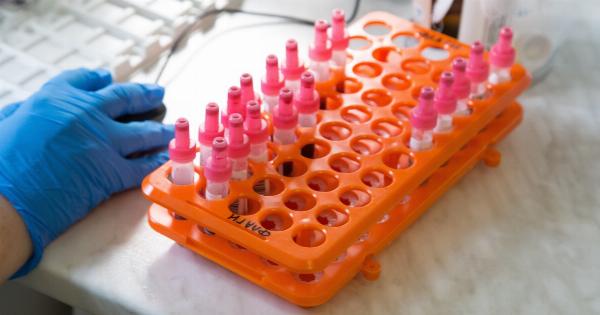Roche, a leading healthcare company, has recently announced the development of a new examination method for plasma samples and tumor tissue.
This breakthrough technology is expected to revolutionize cancer diagnosis and treatment, enabling more accurate and personalized patient care.
Paving the Way for Precision Medicine
Precision medicine has emerged as a promising approach to cancer treatment, where therapies are tailored to the genetic makeup of an individual’s tumor.
However, obtaining enough tissue samples for genetic analysis can often be challenging, especially when tumors are small or inaccessible. Roche’s new exam aims to address this issue by allowing for the analysis of plasma samples, which contain cell-free DNA shed by tumors.
This non-invasive technique can potentially replace the need for invasive biopsies for tumor analysis, making it easier to monitor disease progression, treatment response, and detect genetic mutations that drive tumor growth.
The ability to analyze plasma samples opens up new opportunities for early cancer detection, monitoring minimal residual disease, and tracking the emergence of drug resistance.
Breaking Down the Technology
The new examination method developed by Roche involves the use of advanced molecular biology techniques to detect and analyze tumor-specific genetic alterations in plasma samples and tumor tissue.
By extracting cell-free DNA from plasma samples, scientists can identify specific mutations and alterations that can guide treatment decisions.
The exam utilizes next-generation sequencing (NGS), a cutting-edge technology that allows for the sequencing of thousands of genes simultaneously.
This high-throughput approach provides comprehensive genomic profiling, enabling clinicians to identify actionable mutations that can be targeted with specific therapies.
Furthermore, the exam incorporates digital polymerase chain reaction (dPCR) technology to accurately quantify and validate genetic alterations identified through NGS.
dPCR allows for precise and sensitive detection of DNA mutations, providing clinicians with actionable information to guide treatment decisions.
Applications and Benefits
The new exam developed by Roche has wide-ranging applications in cancer diagnosis and treatment:.
1. Early Cancer Detection
Plasma-based testing can facilitate the early detection of cancer by identifying tumor-specific genetic alterations. This can significantly improve survival rates, as early intervention often leads to better treatment outcomes.
2. Monitoring Minimal Residual Disease
After surgery or other primary treatments, there is a risk of residual cancer cells remaining in the body.
Monitoring for minimal residual disease using plasma-based testing can help identify patients at risk of disease recurrence and guide decisions regarding adjuvant therapies.
3. Monitoring Treatment Response
Plasma-based testing allows for real-time monitoring of treatment response. By analyzing cell-free DNA, clinicians can assess whether a treatment is effectively targeting the tumor and make necessary adjustments to optimize patient outcomes.
4. Identifying Drug Resistance
Resistance to cancer therapies is a common challenge in cancer treatment. The new Roche exam can detect the emergence of drug-resistant mutations, providing clinicians with the opportunity to switch to more effective therapies in a timely manner.
Conclusion
The development of Roche’s new exam for plasma samples and tumor tissue represents a significant advancement in the field of precision medicine.
By enabling non-invasive testing and comprehensive genomic profiling, this technology holds immense potential for improving cancer diagnosis, treatment selection, and patient outcomes.
























